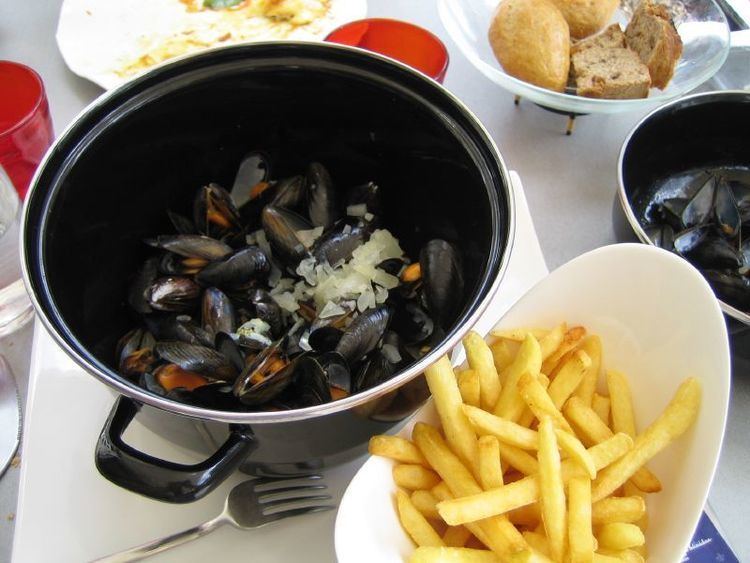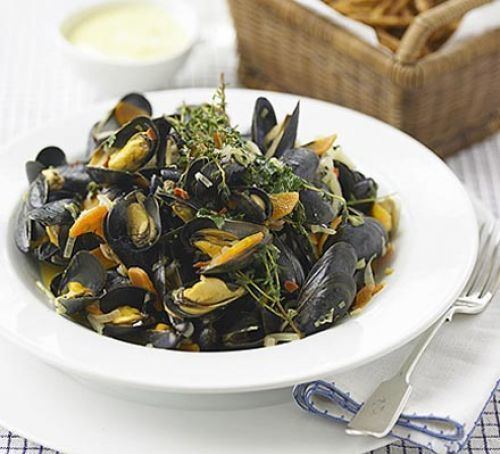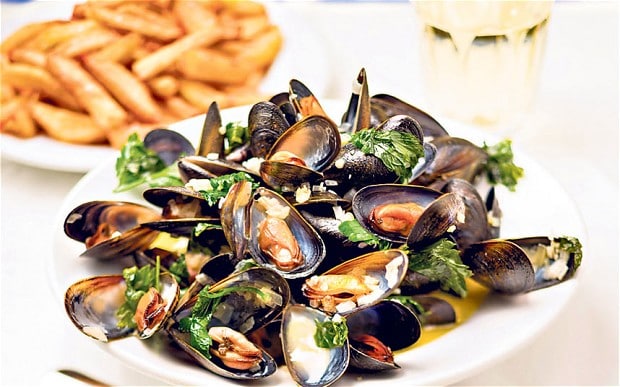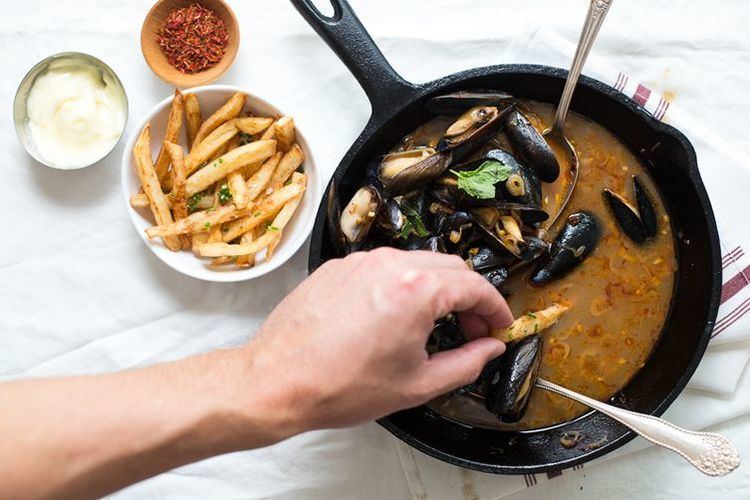Main ingredients Potatoes, Mussels | ||
 | ||
Similar Mussel, Mussels, Steak frites, French fries, Blue mussel | ||
Moules-frites or moules et frites ([mul.fʁit]]; Dutch: mosselen-friet) is a popular main dish of mussels and fries originating in Belgium. It is also popular in France and in the rest of Northern Europe. The title of the dish is French, Moules meaning mussels and frites fries, with the Dutch name for the dish meaning the same. It is sometimes considered the national dish of Belgium.
Contents
The portion of moules in Belgian restaurants tends to be one and a half kilograms per person, which can be prepared in several different ways.

History

Although moules-frites are popular in France and around the world, it is thought that the dish originated in Belgium. It is likely that it was originally created by combining mussels, a popular and cheap foodstuff eaten around the Flemish coast, and fried potatoes which were commonly eaten around the country in winter when no fish or other food was available. On their own, french fries are also closely associated with Belgian cuisine by many Europeans. Although Belgium claims to be the birthplace of french fries, their origin is uncertain and several other countries also claim the title.
Moules

The ways in which the mussels are cooked in the dish can vary significantly. Some variants commonly seen are:

Less commonly, fusion variants are seen in which the stock may be flavoured with non-local ingredients such as Espelette pepper or Pernod liqure. They can also be served with "Mosselsaus", a sauce that is made with mayonnaise, mustard and vinegar. In Belgium, the moules used are generally farmed in nearby Zeeland in the Netherlands.
Frites
In various forms, frites or friet play an important role in Belgian culture and cuisine. Within Belgium, bintje potatoes are generally preferred as a basis to make fries because of their high starch content. They are generally double-fried (fried, left to cool and then fried again) in order to make them both moist in the core and crispy on the outside. As a part of this, they are often fried at a particularly high temperature (around 190 °C (374 °F) ).
Presentation and nutrition
As a dish, the moules and the frites are usually served on separate plates or dishes so that the fries do not become moist. Often, the moules are served in the same pan and stock used to cook them. A second pan or dish is generally also provided in which the mussels' shells can be left once the mussels themselves have been eaten.
According to a French nutritionist, the optimum quantity of mussels is one litre, considering their nutritional value and Omega 3 content, but not more than 150 grams (5.3 oz) of fries. This quantity contains between 500-600 calories.
Popularity and in popular culture
In both Belgium and France, moules-frites are available in most restaurants. According to a survey conducted by TNS, moules-frites was identified as the second favourite dish in France, receiving a vote of 20 percent, narrowly losing to magret de canard which received 21 percent. On average, between 25 and 30 tonnes of moules are consumed each year in Belgium as moules-frites.
The Belgian musician, Stromae, performed a song entitled "Moules frites" in his 2013 album, Racine Carrée.
